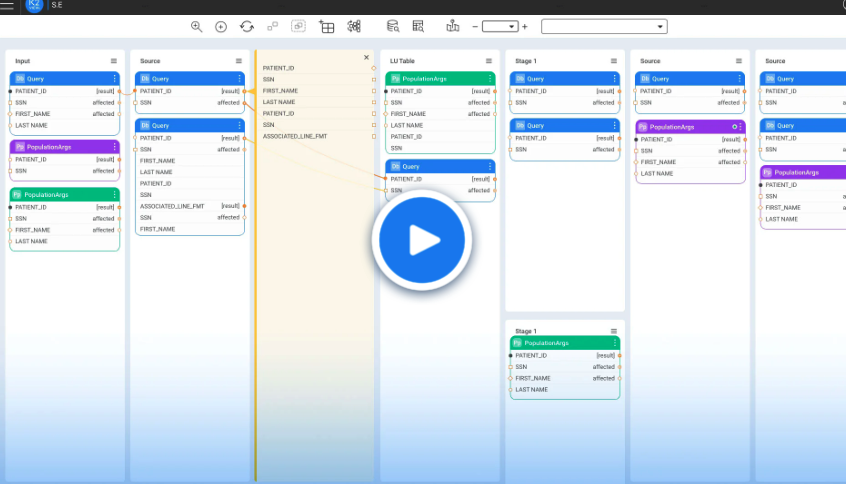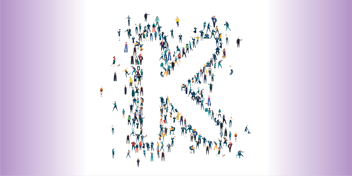Data anonymization tools safeguard the privacy of a dataset’s subjects. Select the best tool for your organization according on your data anonymization use cases.
Table of Contents
What are Data Anonymization Tools?
Data anonymization tools allow data stakeholders to change or remove sensitive information – PII, credit cards, medical records and more – from a given dataset. By doing so, data anonymization tools make it nearly impossible to determine the individual to whom the data belongs. This process, also called data masking, lowers the risk of unintended data disclosure – thus reducing both legal and regulatory liability.
Any organization that collects, stores, handles, or transfers sensitive data generally uses some form of data anonymization. Data masking tools can be configured to deliver varying levels of anonymization – depending on the business, the types of data in question, and how/if this data needs to be shared.
Usually, some elements of the anonymized data remain intact to facilitate analysis and effective data usage. Yet advanced data anonymization tools consistently obfuscate both direct personal identifiers like names, addresses, telephone numbers or social security numbers, alongside indirect identifiers like salary, place of employment, or diagnosis. This removes anything that could be linked to effectively identify a specific individual.
Data anonymization tools are mandated by various regulations, including the European Union’s General Data Protection Regulation (GDPR), which requires the anonymization of personal data stored about EU citizens, and HIPAA, which requires the anonymization of medical records in certain instances. Once this data is anonymized, it is no longer subject to regulatory limitations – enabling businesses to leverage their data freely, without fear of regulatory repercussions.
Why Do I Need Data Anonymization Tools?
In an increasingly privacy-sensitive business and legislative climate, data anonymization tools are necessary to protect privacy and avoid regulatory penalties.
Healthcare, finance, and other industries are constantly under attack by hackers. The number of individuals affected by breaches of sensitive data soared in 2022 – reaching some 422 million people in nearly 2,000 serious incidents – up from 294 million in 2021. Data that had been masked by data anonymization tools would most likely not have been affected by such breaches.
Similarly, the pressure from regulators on companies to uphold privacy standards reached a new peak in 2022, with many millions of Euros in fines for Amazon (fined €746 million by Luxembourg regulators), Instagram (fined €405 million in Ireland), and Meta (fined €265 million for a data leak). Adoption of data anonymization tools can prevent the disclosure of such sensitive information – protecting individual privacy while still preserving the credibility of data collected, manipulated, and exchanged.
How are Data Anonymization Tools Used?
Data anonymization tools automate the process of identity protection, and are generally based on one of the following methods:
-
Synthetic data generation, which replaces, rather than alters, original datasets, with algorithmically created artificial datasets.
-
Scrambling, which randomly mixes up the characters in a particular dataset.
-
Pseudonymization, which substitutes individual identifiers with fake ones, called pseudonyms.
-
Generalization, which deletes certain data elements to make identification impossible, while maintaining functionality
-
Shuffling, which rearranges and swaps dataset attributes.
-
Perturbation, which modifies a dataset by adding random noise, or rounding numbers.
Choosing the best method for data anonymization depends on the use case at hand. For example, a data scientist analyzing the data related to a customer’s bank transactions will have different requirements than a student conducting a survey. Choosing the best data anonymization tool also depends on the complexity of a given project and technical parameters, like the programming language used.
Data Anonymization Tools Use Cases
Data anonymization tools can be applied to numerous use cases, including:
- Software testing
Companies must anonymize Personally Identifiable Information (PII) and other sensitive test data to ensure privacy and to comply with data protection regulations, such as the General Data Protection Regulation (GDPR) in Europe, the California Privacy Rights Act (CPRA), and the Health Insurance Portability and Accountability Act (HIPAA) in the US. - Marketing analytics
Online retailers need to analyze consumer data and behavior to improve how they communicate with customers via website, email, social media, and advertising. Yet they, like other departments, are subject to privacy regulations in the data that they analyze. Data anonymization tools enable marketers to harvest relevant insights, while still remaining compliant.
- Medical research
Medical researchers and healthcare professionals examining data about how prevalent a given disease is among a specific population, for example, use data anonymization tools to make sure they are in constant compliance with HIPAA standards, and protect patient privacy. - Business performance
Enterprises collect employee-related data to gauge their performance, optimize productivity, and augment employee safety. Data anonymization tools enable companies to analyze valuable data, without violating employee privacy.
Data Anonymization is NOT Pseudonymization
Data anonymization and pseudonymization are both popular techniques for reducing data identifiability, but it’s important to understand the difference.
Pseudonymization is actually a data de-identification method. Data pseudonymization tools substitute private identifiers with false identifiers, or pseudonyms. For example, a data pseudonymization tool would swap the identifier "XY" for "ZA". This retains a logical swap pattern that improves data confidentiality while retaining statistical precision – enabling data to be used with confidence and privacy for analysis, training, and testing.
In a pseudonymization vs anonymization comparison, the two are not equivalent – neither from a technical or a regulatory perspective. Pseudonymization can typically be viewed as a reversible form of anonymization, where the production data is recoverable. Although it can sometimes be made irreversible, where the original information can’t ever be recovered from the pseudonymized data.
Further, data pseudonymization tools only reduce the linkage between individuals and their data – whereas data anonymization tools eliminate this link. For this reason, data that has been pseudonymized is often not considered protected under regulations like GDPR. On the other hand, when full-blown anonymization is not necessary, data pseudonymization is a simpler way to obfuscate data, while still ensuring the integrity of the identification chain.
Top Data Anonymization Tools
Below are the 5 leading data anonymization tools on the market:
-
K2view
K2view offers a unified suite of data anonymization tools covering a broad range of capabilities and techniques, including in-flight masking and transformations, static and dynamic data masking, and structured and unstructured data masking.
Powered by entity-based data masking technology, K2view data anonymization tools collect and organize fragmented multi-source data by business entities – e.g., customer, order, device, or loan. Data is then masked in flight, in the context of the business entity, ensuring referential integrity.According to Gartner user reviews, K2view allows for PII data protection, with sensitive data masked from operational data sources and analytical datastores, at enterprise scale.
-
Broadcom
Broadcom provides data anonymization as part of its Test Data Manager solution. Its Test Data Manager combines data subsetting, masking, and on-demand data generation, to enable testing teams to meet their company’s data testing needs. According to user reviews, Broadcom’s interface is complex, and does not enable a self-service approach.
-
IBM
IBM InfoSphere Optim Data Privacy lets testing teams use a variety of techniques to replace sensitive data with contextually accurate (yet fictitious) data. It identifies where sensitive data resides, and masks it on-demand (within warehouses, databases, in the cloud, and big data environments) and provides for data anonymization in both production and non-production environments. According to user reviews, the IBM solution is missing certain crucial integrations.
-
Informatica
Informatica Persistent Data Masking, scheduled for retirement in 2024/25, secures sensitive data via anonymization and encryption in support of testing, analytics, software development, and non-production environments. It provides scalability, management, and connectivity for traditional databases, Apache Hadoop, and cloud environments – while assuring consistent data anonymization policies cross-company with a single audit trail. According to user reviews, Informatica has a steep learning curve, which slows down time-to-value. In addition, critical concerns have been raised about Informatica Cloud Test Data Management, in light of the retirement of its on-prem version.
-
Dataprof
Datprof Privacy anonymizes data consistently across multiple systems, tables, or cloud applications. Combined with synthetic data generation capabilities, it helps companies obtain representative and scalable test datasets while keeping sensitive information secure and preserving continuity. According to user reviews, the Dataprof solution requires a lot of effort to prepare template implementations, and doesn’t allow for dataset reusability.
Data Anonymization Tools Based on Business Entities
One of the most advanced methods for data anonymization is based on the entity-based data masking approach. A business entity corresponds to all the data associated with a specific customer, invoice, or device. The data for every instance of a business entity is managed in an individually encrypted Micro-Database™ – one Micro-Database for each entity. When entity-based data anonymization is based on intelligent business rules, companies can achieve compliance, ensure privacy, and maintain productivity – more effectively, rapidly, and smoothly.













